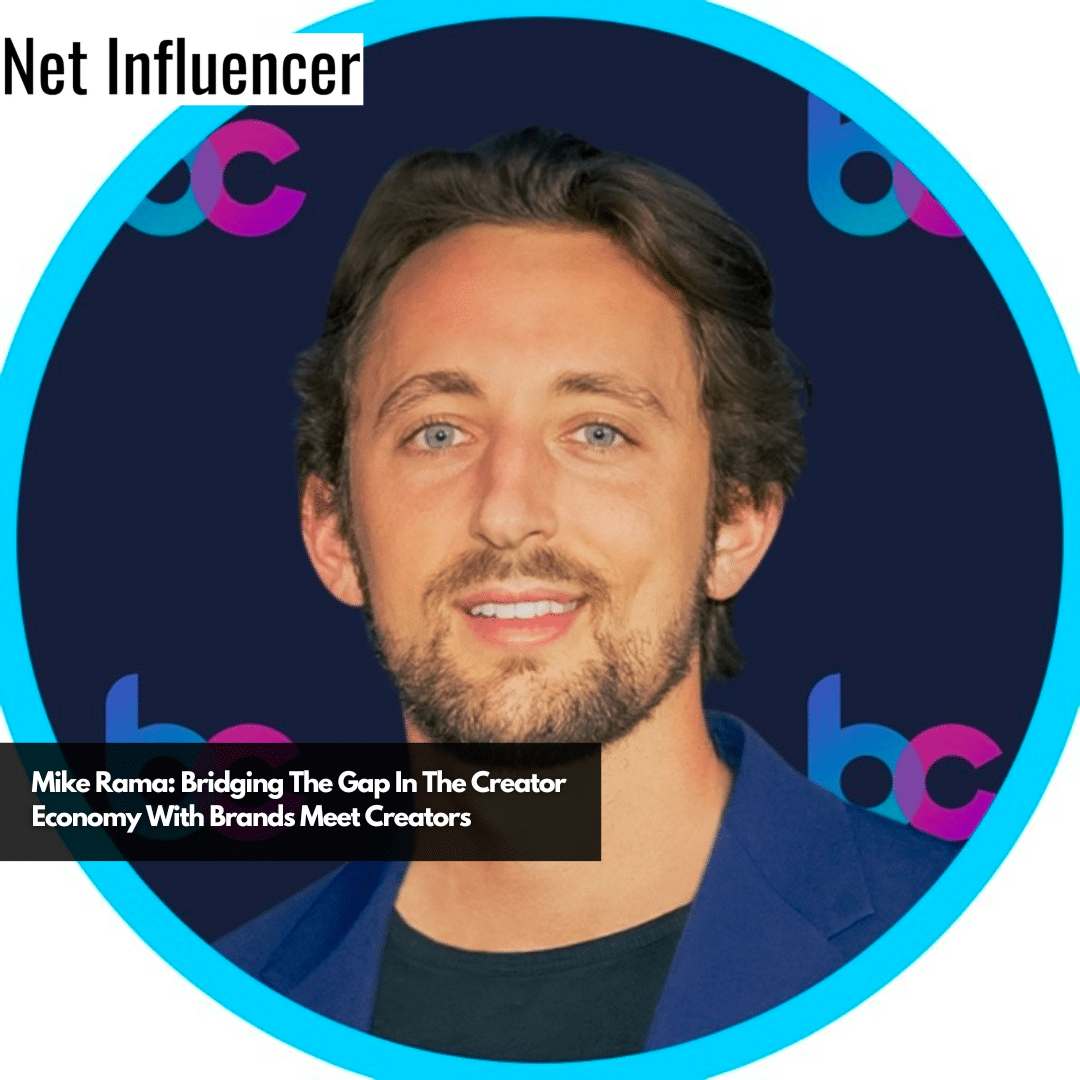Technology
Mike Rama: Bridging The Gap In The Creator Economy With Brands Meet Creators
Brands Meet Creators is an online platform founded by entrepreneur Mike Rama that aims to facilitate direct partnerships between brands and digital creators/influencers. It was created to address the need for more authentic, strategic collaborations in the influencer marketing space that provide mutual value.
The platform allows over 40,000 creators to connect with brands seeking content. Unlike competitors, Brands Meet Creators does not impose restrictive usage rights or limit communication channels – it gives creators and brands full control to customize partnerships on their own terms.

“I was growing my following and figured out how to leverage it for brands”, Rama begins. “They came to me, essentially saying, ‘We want TikTok, but we have no idea what to do,'” Rama shares. This insight spurred the evolution of his agency into Brands Meet Creators.
“Most platforms were all about connecting brands and creators on a very transactional level. We saw an opportunity to shift that to something more meaningful”, Mike Rama says.
His vision for Brands Meet Creators is to transcend mere networking, aiming to cultivate authentic, mutually beneficial relationships, “Our goal is to streamline the process of finding the right creators for brands, making sure these partnerships are not just effective but resonate on a deeper, more authentic level,” he says.
Mike Rama: Bridging The Gap In The Creator Economy With Brands Meet Creators
Facilitating Direct Communication: The Core of Brands Meet Creators
“Most times, the brand and the content creator just want to go back and forth in email. They don’t want to be siloed within a platform,” he explains. This approach respects the individual communication preferences of brands and creators, whether it be through email, Slack, Discord, or other channels.

“We don’t want to control how partnerships communicate. If a brand likes an application, they hit a button, and it starts an email thread with the creator. From there, they can set up a Zoom call, a Google Meet, or even bring them into their Slack channel,” Rama details. This frictionless process is designed to integrate seamlessly with the existing communication systems of both parties, fostering easier and more natural collaborations.
Another distinctive aspect of Brands Meet Creators is the flexibility it offers in partnership terms. Unlike other platforms that often impose strict and perpetual usage rights for content, Brands Meet Creators allows for customized agreements. “We found that not many people want to give up perpetual rights to their content for a meager sum. Our platform lets brands and creators structure the deal as they see fit,” Rama points out.
This customization can range from limiting content usage to a specific time frame to setting unique terms for each partnership. “If a creator wants to stipulate that the content can only be used for three months, they have the freedom to do that,” says Mike Rama. This approach not only respects the rights and wishes of content creators but also fosters a sense of fairness and mutual benefit in the partnerships formed.
Brand-Creator Partnerships: Addressing Expectation Mismatches
“There can often be a mismatch in expectations. Brands may want as much free content as possible, while creators are on the opposite side of that spectrum,” he explains. Mike Rama believes this is the main hurdle in forming effective partnerships and that this discrepancy can lead to friction and misunderstandings, hindering the formation of successful, long-term relationships.
Brands Meet Creators tackles this challenge by adopting an open market approach. Rama describes the platform as a free, open market where brands can post jobs subject to an approval process. This system naturally regulates mismatches in expectations. “If a brand’s job post doesn’t align with market expectations, they simply won’t get applications. It’s self-correcting,” Mike Rama states.
He further explains, “If a brand is asking for too much and offering too little, they might find that very few creators are interested. This lack of interest forces brands to reassess and adjust their offers.” This market-driven approach encourages both brands and creators to align their expectations with the reality of the marketplace.
Creator-Brand Partnership: Rama’s Advice for Creators
His first advice for creators is not to shy away from demonstrating their value upfront. “Don’t be afraid to give things first,” he suggests. This approach contrasts with the common mindset of expecting payment before any work is done. He believes in the power of showing one’s worth and capabilities as a way to build trust and rapport with brands.
“Prove your worth, and give before you receive,” Rama says, highlighting that this strategy can be more effective in the long run. He suggests that creators take initial steps to go above and beyond, even before formalizing a partnership. For instance, creating a brief video outlining potential strategies for a brand’s account can make a significant impact. “Going above and beyond, and not being afraid to do that,” he states, is key to standing out.
Sharing his personal experience, Mike Rama notes, “Most of the brands I’ve created content for started with small gestures, like offering a huge discount for one video.” These initial acts of goodwill can lead to long-term, mutually beneficial relationships. “Those are the types of relationships that last because they see what I can do for them, and they know I’m always going to go the extra mile,” he adds.
Envisioning the Next Phase for Brands Meet Creators

“I’d love to see more and bigger partnerships happen through our platform,” he says. He envisions collaborations that go beyond traditional agreements, such as equity partnerships where creators are seen as long-term assets. “Seeing the creator as a long-term play for them, a long-term vision,” Mike Rama elaborates, indicating a shift towards more integrated and strategic relationships between brands and creators.
Recognizing the impact of in-person connections, Rama wants to incorporate more real-world interactions into the platform’s offerings. “In a world where everyone’s on Zoom, having some type of in-person meetups, in-person events, those are huge,” he states. This approach acknowledges the unique value of face-to-face interactions in building stronger, more personal connections within the digital community.
For Mike Rama, the future vision of the platform is clear. “We want to help creators become well-rounded, not just monetize off brand partnerships, but also launch their own businesses, products, companies,” he explains.





















